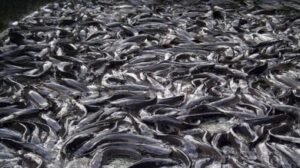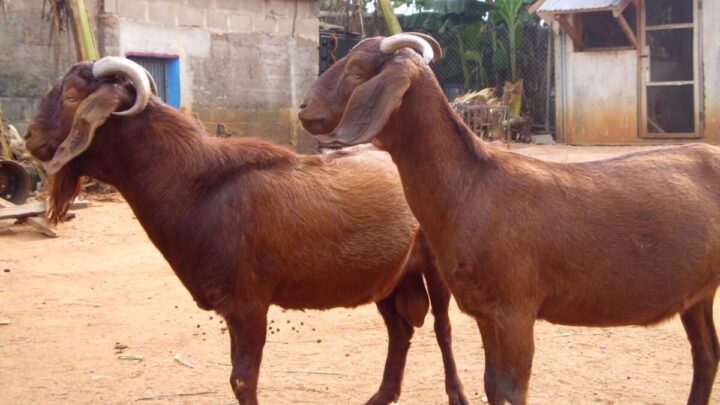Last updated on July 25, 2025
When it comes to catfish farming in Nigeria, timing is everything. Knowing exactly how many months it takes for your catfish to grow from tiny fingerlings to a 1kg market-ready size helps you plan your feeding budget, manage cash flow, and maximize your profits.
Let’s give it to you straight: in Nigeria, you can grow catfish to a profitable market size in 4 to 6 months. This answers the direct question of how many months does it take catfish to grow under optimal Nigerian conditions.
That’s right—with the right management, you can achieve a full harvest cycle in less than half a year. But this timeline isn’t guaranteed. It depends heavily on a few key factors specific to farming in our environment. Let’s break down the typical growth stages and the Nigerian game-changers that determine your success.
Your 4-Month Target Checklist:
- ✓ High-Quality Feed: No compromises, especially in the first 3 months.
- ✓ Pristine Water Quality: Consistent temperature and regular changes.
- ✓ Correct Stocking Density: Avoid overcrowding at all costs.
- ✓ Superior Genetics: Source fingerlings from a trusted hatchery.
Why is the Timeline in Nigeria So Fast?
You may hear about catfish farming in the U.S. taking up to 18 months. The reason for our advantage is simple: we farm a different species. The African Catfish (Clarias gariepinus), which is the dominant species in Nigeria, is a notoriously fast grower compared to the American Channel Catfish. Under optimal conditions, it can pack on weight rapidly, making the 4-6 month target achievable. This explains why how many months it takes catfish to grow here differs significantly from other regions.
Catfish Growth Stages & Timeline in Nigeria
Here is a realistic month-by-month breakdown of what to expect:
Stage 1: Egg to Fry (First Month)
After hatching, the tiny larvae (fry) feed on their yolk sacs for 3-4 days. They then graduate to live feed like artemia before transitioning to a high-protein powdered starter feed.
Timeframe: 3–4 weeks.
Stage 2: Fry to Fingerling/Juvenile (Month 1 to 3)
This is where visible growth kicks in. The fry develop into fingerlings (4-6 inches) and then into juveniles. Consistent, high-quality feeding during this stage is critical for building a strong foundation for future growth.
Timeframe: By the end of month 3, you should have healthy, active juveniles.
Stage 3: Juvenile to Market Size (Month 4 to 6)
This is the “bulking” phase. Your catfish will gain weight rapidly, aiming for the 800g to 1.5kg range. Most well-managed farms in Nigeria begin harvesting during this period.
Timeframe: By month 4, some fish will be ready. By month 6, the majority of your stock should have reached market size.
What Really Affects Your Catfish Growth Timeline in Nigeria?
Achieving the 4-month target versus the 6-month one comes down to managing these four factors. These truly determine how many months does it take catfish to grow to maturity.
- Feed Quality and Consistency: This is everything. You cannot expect fast growth on low-protein, cheap feed. Invest in high-quality floating feed, especially for the first 3 months, and stick to a strict feeding schedule (e.g., morning and evening). For detailed insights into managing feed, see our guide on How Many Bags of Feed for 1000 Catfish in a Month?.Mr. Emmanuel Oluranti, an aquaculture consultant, recently stated, “The feed segment accounts for 70% of the cost of fish farming. If you get it wrong, you get everything wrong.” [Source: The Nation Online] This underscores the absolute necessity of quality feed for achieving your target growth timeline.
- Water Quality: Clean water is non-negotiable. Poor water with high ammonia stresses fish, stunts their growth, and invites disease. Maintain a warm temperature (25°C–30°C) and ensure good oxygen levels. Pro tip: Don’t skip your water changes! According to Dr. (Mrs.) Remi Alamu, a senior researcher at the Nigerian Institute for Oceanography and Marine Research, “Water is life to fish. If the water quality is not properly managed, all other inputs become wasteful.” This highlights that maintaining optimal water conditions is paramount for sustained growth.
- Stocking Density: Do not overcrowd your pond. A pond packed like a Lagos bus at rush hour means fish will compete for oxygen, space, and food, which slows down growth for everyone. A good benchmark for concrete ponds is 80–100 fish per square meter. Learn more about optimizing space in our guide: How Many Catfish are in a 1000 Litre Tank?.
- Genetics: Always source your fingerlings from a reputable hatchery. Good genetics from fast-growing parent stock give you a significant head start.Mr. Kazeem Adeosun, a seasoned fish farmer in Ogun State, advises, “Starting with quality fingerlings from a reputable hatchery is 50% of your success. Poor genetics will always give you stunted growth, no matter how good your feed is.” [Source: Premium Times Nigeria] This emphasizes the foundational role of genetics in achieving optimal growth timelines.
Conclusion: Your 4-6 Month Target is Achievable
You now have the timeline: a 4 to 6-month target that is well within your reach. Mastering this timeline is about controlling the variables. To become a true master of those variables, your next step is to understand the science behind them. Dive deeper with our Ultimate Guide to Catfish Growth: Stages & Key Factors.
FAQs about Catfish Growth in Nigeria
How fast do African Catfish grow in Nigeria?
African Catfish typically grow to market size (around 1kg) in 4 to 6 months in Nigeria under good management.
Why is catfish growth faster in Nigeria than in the U.S.?
This is mainly because Nigeria primarily farms the fast-growing African Catfish species, which matures much quicker than the American Channel Catfish.
What are the most important factors for fast catfish growth?
Key factors include high-quality feed, excellent water quality, proper stocking density, and good genetics from reputable hatcheries.
What is the ideal temperature for catfish growth?
Catfish thrive in warm water temperatures, ideally between 25°C and 30°C, which supports their metabolism and rapid growth.


